Winter Workdays
While workdays are scheduled year round, the winter months provide a unique opportunity to get rid of some nasty woodland invasives. Native wildflowers are now dormant and safely hiding under ground, so there is no risk that a hoard of eager volunteers will trample their delicate foliage. Mosquitoes, those flying little jerks, are long gone, making it safe to venture into the woods without being eaten alive. Finally, the trees and shrubs are now naked, making it just a little bit easier to navigate the woods and perform our important work.
However, volunteering in winter brings with it a few challenges. For a start, it is usually god-awful cold. As much as I enjoy working outside, I am not a big fan of temperatures below freezing. Just seeing the frost creep up the windows of my home makes me want to crawl back into bed, and pretend I am not a gullible steward tricked into working for free on my weekend off. In my time as volunteer, I have seen people attend a workday unprepared for the job at hand. Most of the time they are woefully under-dressed. I couldn’t help but wonder if they received the memo on what to wear — which lead me to ask the question— is there an actual memo?
So purpose of this guide is to prepare you for your first winter workday. It may have been years since your mom told you how to dress, but for the sake of your safety and comfort, I am going to do just that. Even if you give someone advice, there is no guarantee they will adhere to it. So I will do my best to explain why you should follow the suggestions. If you are experienced workday volunteer, then much of what I am about to say is probably old news—or at least I would hope so. Even so, you still may learn a thing or two. So, let’s get started….
Layer Up
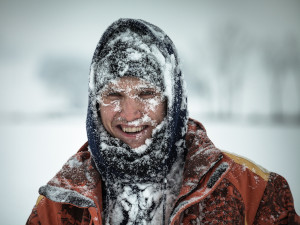
You have probably heard it time and time again—in winter, to stay warm, you dress in layers. But what exactly does that mean?
Well, as mentioned in the previous section, for each piece of clothing piled on top of each other, you are adding a layer of insulation, including the layer of air trapped between them. This makes you warm and snug. As you work you are inevitably going to produce more body heat, and so to avoid overheating, you shed one of the layers to bring yourself back to the Goldilocks zone—not too hot, not too cold. Once you begin to feel cold again, you can put the item back on. Having several thinner layers is going to offer you more control over regulating your temperature and comfort level than if you had worn one thick layer. Is that all there is to it? Well, not quite.
During a three hour workday, volunteers are not simply standing around gossiping with friends, watching the awesome steward do all the work. No, you are all cutting and sawing, dragging and hauling, lifting and piling. Yes, you are good little worker bee, and when you work, you get hot. And sweaty. Oh so sweaty!! As you know, sweat is your body’s way of cooling you down. You may be fine when you are active, but the moment you rest, you may start to feel the cold as your body heat is sucked away by evaporation. We can prevent this form of heat loss by wearing clothing that wick moisture away from your skin, and this is where the type of fabric becomes important. Synthetic fabrics like polyester, nylon and spandex are excellent at wicking, while cotton fibers are the worse. And this is the scene the three-layered system enters the stage...
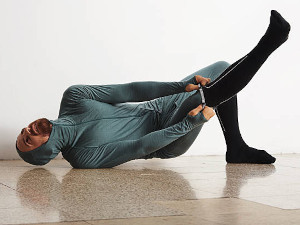
Base Layer
The first layer in the system is referred to as the base layer, and this is the one that is in direct contact with your skin. While this layer can provide some insulation, it primary purpose is to wick moisture. For this reason, base layers should be form-fitting.
If you plan on spending considerable time outside this winter—whether that is a workday or 5 mile hike—then do yourself a favor and acquire a base layer. You can purchase it as a set, or buy the top and bottoms separately. A base layer will be mostly made from one of three materials — polypropylene, polyester, or merino wool. The synthetic fabrics will be the most affordable, and blended with nylon and spandex to provide both strength and stretch. Wool is generally considered the highest quality, providing better insulation, and that will be reflected in the price. When searching online, look for keywords such as base layer, micro-fleece, thermal, breathable, and moisture wicking.
A basic set will set you back at least $20. Last year I received a $100 gift card, and opted to spend all of that that on a Smartwool baselayer, and that was just for the top! I won't lie, it's rather nice, and still provides insulation when wet.
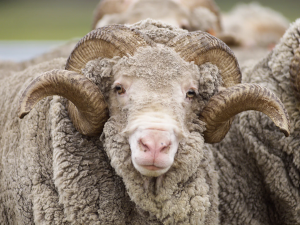
The Mid Insulating Layers
The mid layers are all about trapping heat to keep you warm, but they should also wick moisture away from the base layer. For this, you are once again looking at polyester or wool fabrics; you should avoid wearing cotton.
A loose fitting mid layer is going to wick less moisture than one that is more form fitting, as the latter will make greater contact with the base layer. One option is to have a thin polyester shirt on top of the base layer, followed by a second but less constricted fleese layer.
When shopping for suitable mid-layer clothes, try heading straight to the sports section of a store — as this is a good spot to find synthetic clothing. Here you will find t-shirts, sweaters, hoodies, and jogging bottoms, often emblazoned with a "moisture wicking" sticker. Even still, always check the label to ensure they are not cotton blends.
One thing to kind in mind is that it is always better to have MORE clothing than less. While you can always remove extra clothing to cool down, you can't put on addition clothing you don’t have with you.
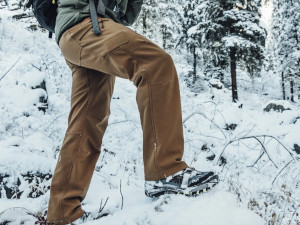
The Shell / Outer Layer
The last layer is the one exposed to the elements - wind, rain, snow, mud. If you were just out for a winter walk, then synthetic breathable fibres that are both windproof and waterproof, yet still allow moisture to escape, are best. However, for working in the woods, I opt for durability and this means cotton.
This is especially true for the bottoms, as you may find yourself in a area with thorny shrubs and brambles. Polyester will tear easily. For this reason, I almost exclusively wear carpenter style jeans made from cotton duck, which is similar to denin but a tighter weave. I will usually have a base layer underneath the jeans, and on really cold days, I will have polyester sweatpants too. Buying loose-fit jeans a size above will help when layering. Carhartt is generally considered the brand of choice, but Dickies and Walls are other good brands.
By outer workcoat is also cotton duck, but is usually shed when work has started.
Extremities
While it is important to keep all of the body insulated, your extremities are going to feel the effects of heat loss first. In order to conserve heat, your body will restrict the blood flow to certain parts of the body considered less important, such as ears, nose, fingers, and toes.
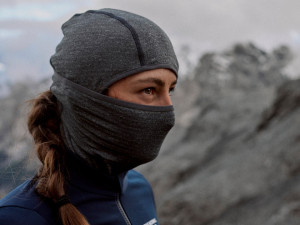
Ski Mask
Just like every other part of the body, your head could also benefit from a base layer. This would be a ski mask, or as we like to call them in England, a balaclava. While a hat covers just the top of your head - extra important for a bald guy like me - a ski mask will also cover your neck, ears, and face. This is especially beneficial when there's a nasty wind chill.
Skimasks are typically made of stretchy polyester, and are designed to cover the mouth and nose. The fabric it is thinner wear the mouth hole is, allowing you to breathe more easy. However, if you wear glasses — as I do — there is a still a good chance they will fog up.
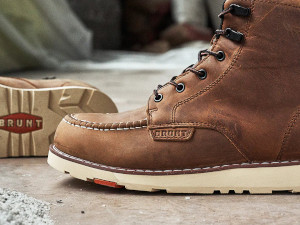
Boots
In winter, especially when there is snow on the ground, you want to be wearing leather boots to keep for feet dry. Farm and Fleet has the best selection of boots, although I have survived with cheap boots from Walmart.

Insulated Work Gloves
For work gloves, I usually opt for a basic leather pair for around $10. However, for winter you can go one step further and buy insulated gloves for twice the price.
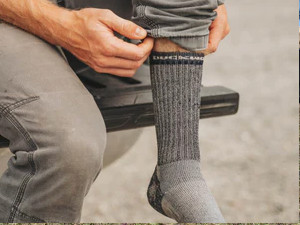
Wool Socks
While boots protect your feet from the elements, you still need insulation to keep your toes toasty warm. For this, we have merino wool socks! Most merino socks are usually around 70-85% wool, with the rest of the fabric being a combination of either nylon, spandex or polyester to provide a little bit of stretch.
Keep is mind that wool is a much better insulator that cotton, especially when wet. This will help if your feet sweat or your boot leak in water. Merino wool socks will usually set you back around $6-10 a pair.
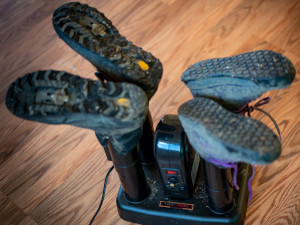
Boot Dryer
If you don't already have a booter dryer, then you seriously need to question your life choices. After a snowy winter workday, your boots and gloves may be wet from snow, and a boot dryer will have them ready for the next workday within a few hours. Dryers will also help elimate odors and bacteria. The only downside is that the may dry out leather boots over time.
For really cold days, you can even pre-warm up your boots and gloves before heading out.
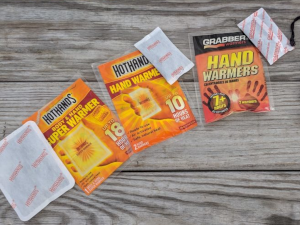
Hot Hands
In addition the boot dryer I received one Christmas, Santa was also kind enough to leave me with a supply of hand warmers. These little packets, once opened, start a chemical reaction that generates heat for up to 10 hours. And believe me when I say it, but they can get pretty damn toasty.
I usually keep a few packets with me on my workdays, should my hands—or those of any of my volunteers—begin to feel the bite of winter. You simply keep them in you pockets, and recharge you hands when you need to. In addition to the hand warmers, I also borrowed some toe warmers from my place of work. These differ in that they have an adhesive side that you stick to the bottom of your sock. Those are nice

 Volunteering
Volunteering Safety
Safety Wildlife
Wildlife Newsletter
Newsletter